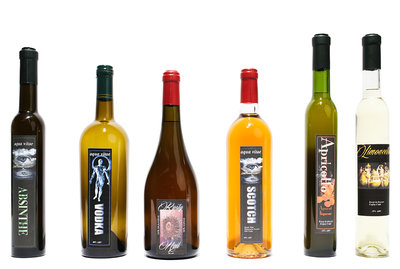
Distilling hard alcohol without a distillery license is illegal in Oregon and the U.S. From herein, any discussion of homemade spirits is purely theoretical.
I may know a man who makes the most incredibly smooth scotch, icy clear vodka, flavorful limoncello and Drambuie, creamy gin, authentic rum. Since I can’t refer to him by name, because he may not exist, I will simply call him “The Provider.”
First, I’d like to knock out your image of a one-toothed moonshiner emerging from the back of his cabin waving a mason jar full of “sumin’ good fer yer grit.” A retired businessman and entrepreneur, my moonshiner lives in an elegant Victorian home of his own design, with his intelligent and discerning wife. His still is located under his sculpting studio, where he creates modern classical pieces based on Greek mythology.
The Provider has a meditative patience that’s required in creating artisan spirits: “Distillation is really the marriage of art and science,” he says. “If you love to cook and experiment in the kitchen and are technically inclined, then distillation is for you. In the end it’s about the melding of flavors accomplished in a measured and calculated way over time.”
It was the discerning wife who sparked The Provider’s interest in home distillation. “She is of Scottish ancestry and every night enjoys a drink called a Rusty Nail, made from a mix of Drambuie and Scotch,” the Provider shares with me. “I told her, ‘I’ll make it for you. How hard can it be?’”
After several years of trial and error, The Provider confirms that the most important element of home distillation is, “making the cuts.”
When you distill alcohol, there are three portions to separate out by taste and smell: the heads, body and tails. The heads are full of “compounds such as methanol and acetone. These have a terribly pungent smell and taste, so you will want to remove these.”
Next comes the body. That’s the good stuff.
Finally we get to the tails. These are full of congeners, or the chemicals that shape flavor and taste, and may add to your morning headache.
“As we descend further down into Dante’s Inferno, the congeners get nastier and nastier. The tails begin to smell like cardboard and paint thinner — not good,” The Provider says. “These are what’s responsible for the really bad hangovers.”
So it’s not that you drank too much, it’s that you drank too many congeners.
“The most important thing in the flavoring of whiskey is to know how much of the heads and tails to add to the body. The more of these you add the longer the whiskey will have to remain in the barrel to become mellow, or you could ruin your efforts by adding too much.”
It’s a decision that I would find incredibly stressful, but The Provider sees it differently. “You arrive at a beautiful moment where you, yes you, have to decide. For some reason there is joy in that moment … followed by months of anxious barrel tasting as the whiskey comes around.”
Ultimately, it seems to be an incredibly satisfying hobby for The Provider, his wife and all their friends and neighbors. “The pleasure of this is more than just the satisfaction of sitting in front of the fire sipping something you’ve made. It’s the joy of sharing with friends and, in the end, becoming part of the tradition that goes back thousands of years, from the ancient Greek experimenters to the monastic explorers, the Irish and the Scots and finally to the backwoods of the rural South. Distillation has a proud history and you can be part of it.”
Provided, that is, you don’t get caught.